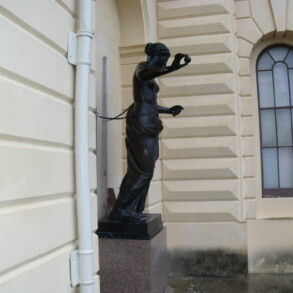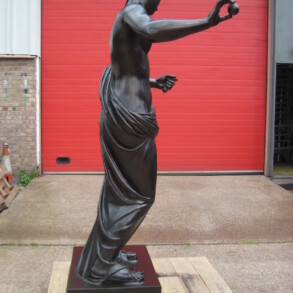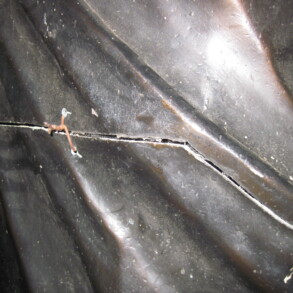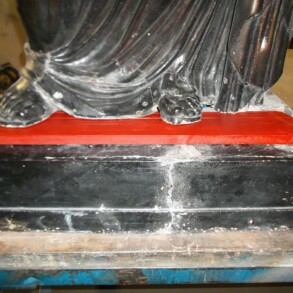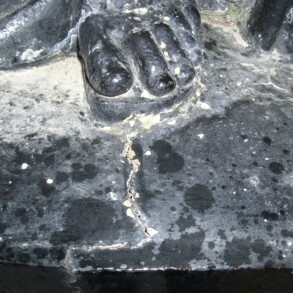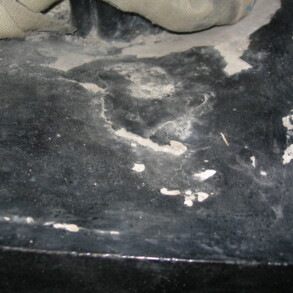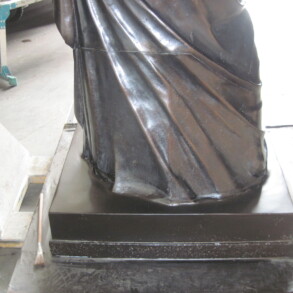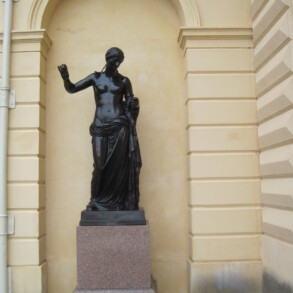Venus d’Arles. Osborne House, Isle of Wight.
Eura Conservation Ltd was commissioned by English Heritage to produce a brief condition report, including treatment proposals and estimates for the conservation of Venus d’Arles which is part of the collection at Osborne House, Queen Victoria's residenceon the Isle of Wight. The heritage merits of Venus d’Arles sculpture required us to ensure that the assessment and consequent proposals be carried out with a clear emphasis on conservation philosophies and our policies on conservation and restoration following The Institute of Conservation (ICON) guidelines.
Project location: |
The full-length zinc statue of the Roman goddess of love, beauty, fertility and prosperity, is an exact copy of the 1.94 metre high Hymettus marble sculpture of Venus at the Musée du Louvre which dates from the end of the 1st century BC. She is depicted with her right leg slightly bent, wearing classic drapery to her lower body and holding a broken band in her left hand and a sphere in her right. One of a collection at Osborne House,Venus d’Arles is clearly of national importance, both as an artefact closely linked to Queen Victoria and Prince Albert and as a fine example of relatively uncommon zinc sculpture. Greater heritage significance is placed on the piece as the manufacture of large-scale sculptures in zinc was only fashionable for a short period from the mid to the end of the 19th century. A soft metal with a reasonably low melting point, zinc was relatively easy to work with; often being electroplated in copper and chemically patinated to give the appearance of bronze, thus being comparatively cheaper than other metals. However the cost advantages were soon found to be outweighed by long-term stability issues; zinc was found to creep under its own weight and was prone to damage due to its brittle nature. There were also extensive corrosion difficulties which were accelerated by the presence of other metals, such as the copper plating. For these reasons the process of using zinc for casting sculpture has not been used widely since the early 20th century. The Venus d’Arles sculpture is one of a series of zinc cast statues, cast by the Berlin founders M. Geiss, who had exhibited bronzed zinc castings at the 1851 Great Exhibition, and was bought by Queen Victoria for her Consort, Prince Albert at some point in the 1850s; the Venus d’Arles was presented by Queen Victoria to Albert in 1858 as a Christmas gift. When examined by Eura’s Conservator, the body of the sculpture appeared to be in a fair condition, with some minor areas of corrosion which have occurred since the previous conservation. However one of the original lead soldered joins had failed causing strain on other areas of the figure. Zinc is a weak material with a pronounced granular structure; these grains do not cohere very effectively and can distort or flow over each other when stress is applied. This join had been temporarily repaired with ferrous wire stiches that were not sufficient to structurally prevent the piece from movement and were certainly not sensitive to the piece’s heritage significance. Following the report Eura conservation were commisioned to carry out sensitive repairs to Venus in order to stabilise the figure and repair the fractures.Venus was moved to our workshops where we undertook the removal of poorly adhering filler, partial dismantling of the base, reshaping with material that was strong enough to reuse, refitted dismantled elements and inserted a new electrically insulated stainless-steel support. This was followed by assessment of the re-positioned centre of gravity, which when found to be satisfactory enabled us to proceed to repair the opening fracture in the lower drapery. There then followed extensive trials to replicate the paint finish applied during previous conservation works. This had been done with a specific type of lacquer which we found to have been superseded. The same manufacturer was able to give us as close an approximation as possible to the original and after many mixes and applications a very close approximation was achieved.
|

